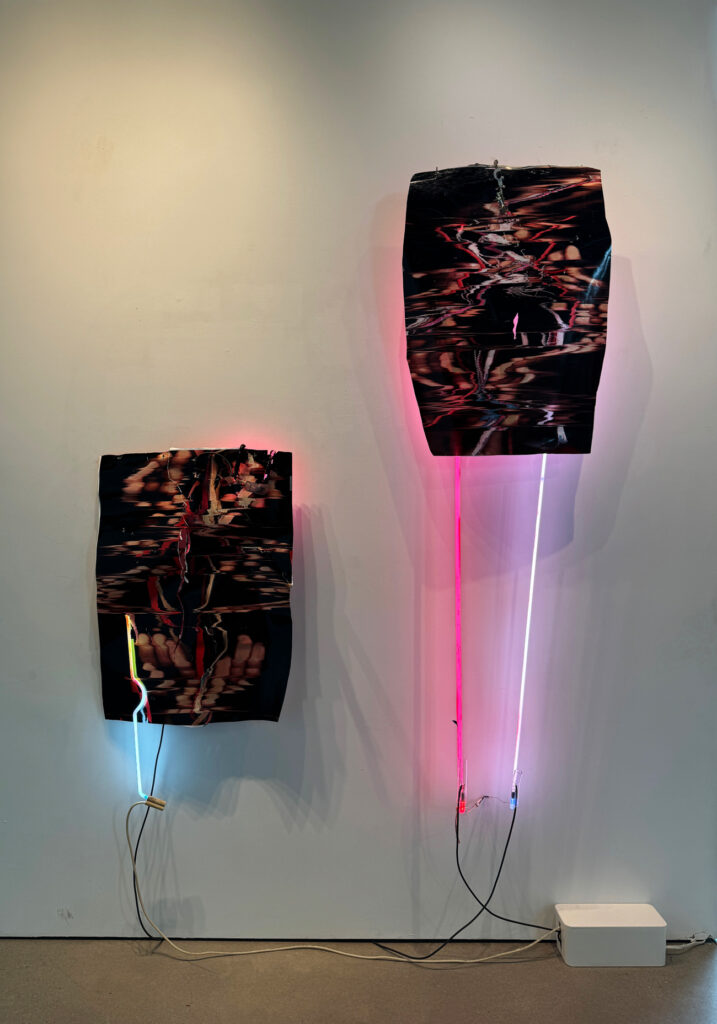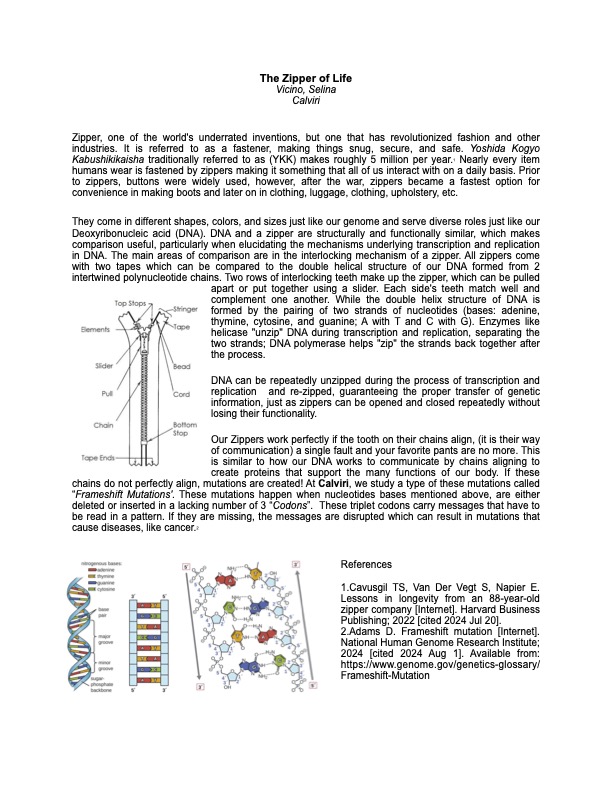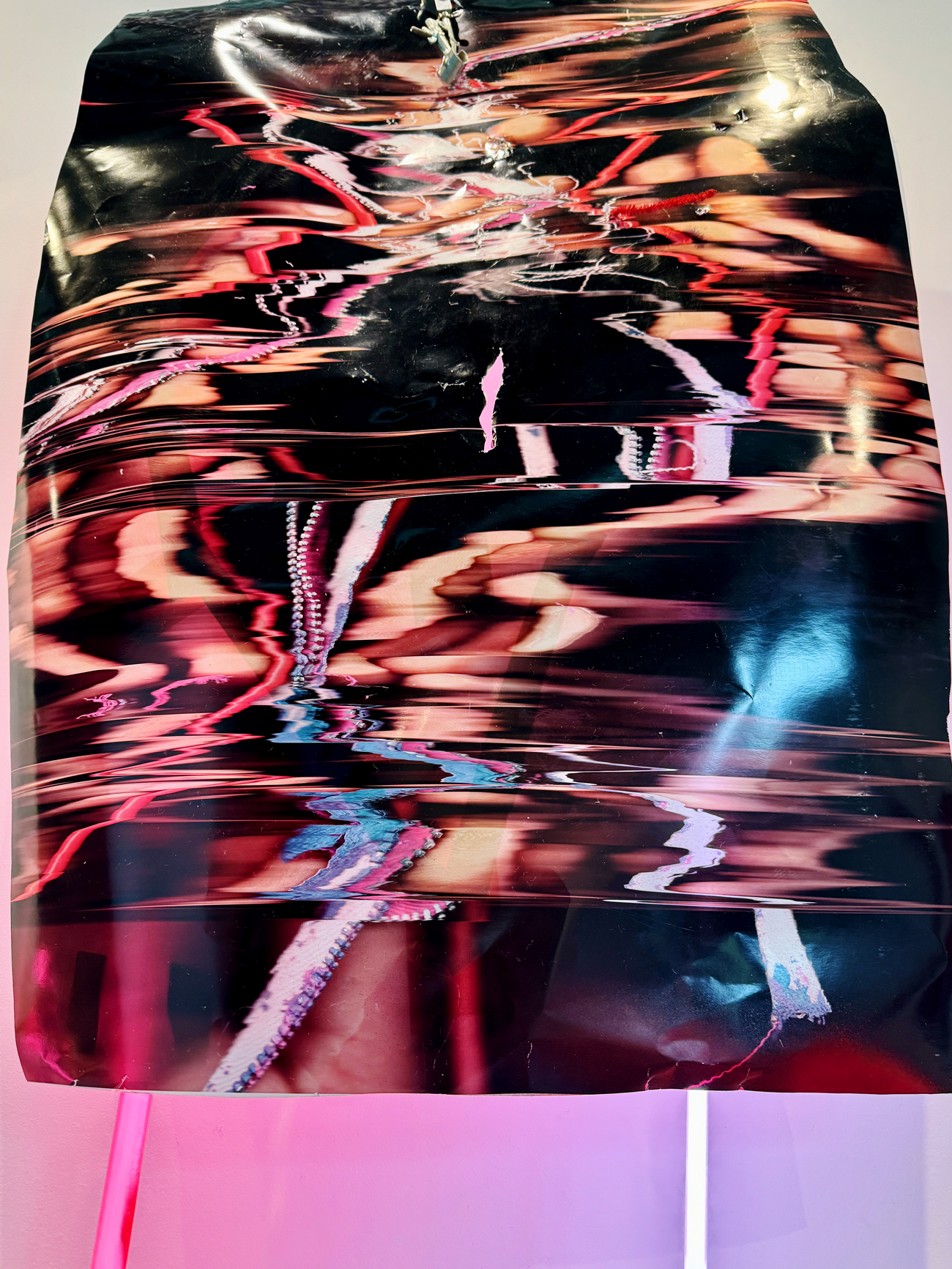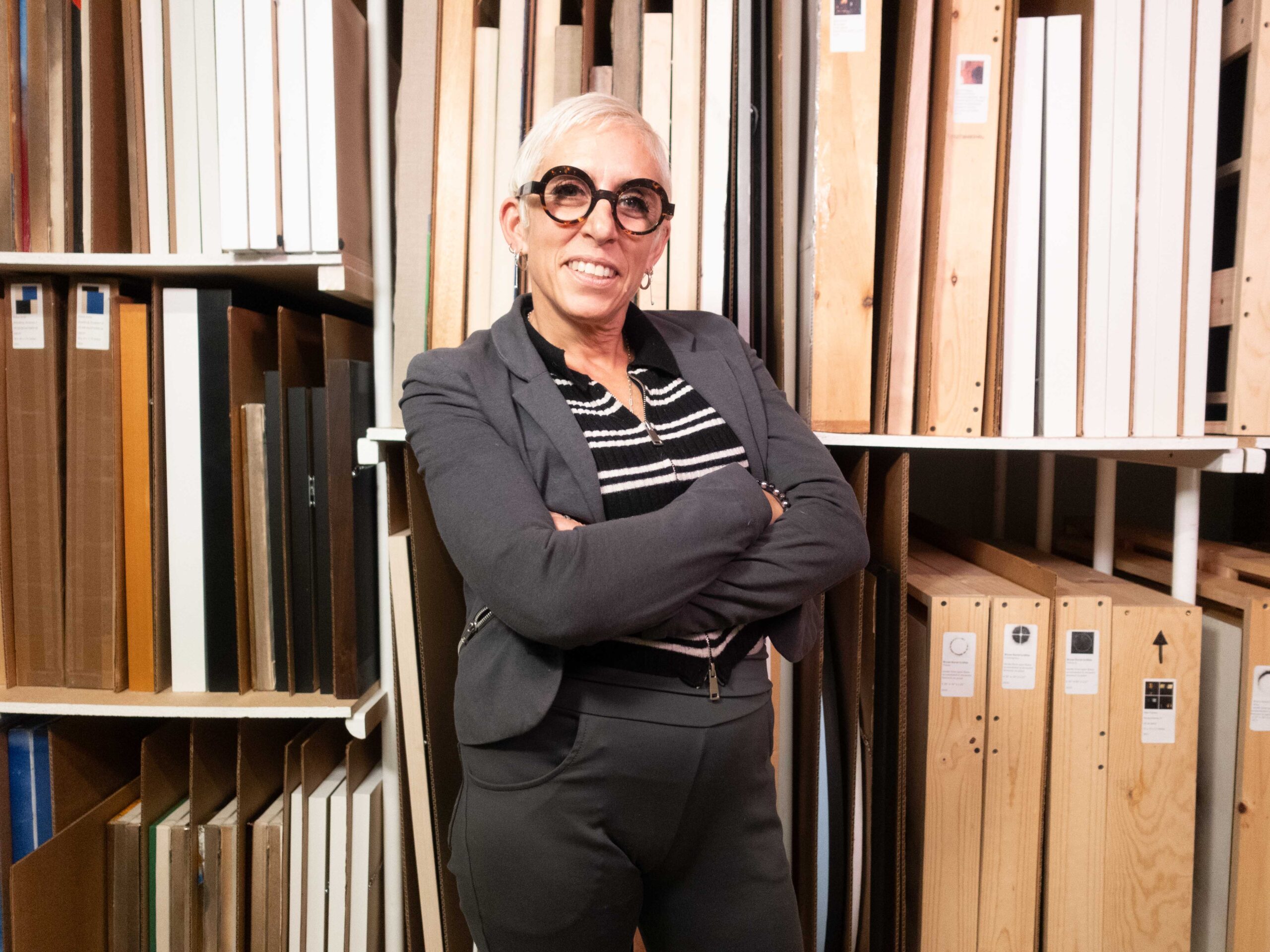Line Translation Error Generation 1
and Line Translation Error Generation 2
Tra Bouscaren and Ana Gervassi

Description
DNA and a zipper are structurally similar when elucidating the mechanisms underlying DNA transcription. The double helix structure of DNA is formed by pairing two strands of nucleotides (bases: adenine, thymine, cytosine, and guanine; A with T and C with G). Enzymes “unzip” DNA during transcription and replication, separating the two strands; DNA polymerase helps “zip” the strands back together after the process. DNA can be repeatedly unzipped during transcription and replication and re-zipped, guaranteeing the proper transfer of genetic information, just as zippers can be opened and closed repeatedly without losing functionality. This project explores what it looks like when that process goes wrong.
Metallic Photos:
I created these images using a flatbed scanner, not a camera. The scanner was physically disturbed while fingerprints and zippers were scanned together in motion. Fingerprint evidence, like DNA, references the presence of unique genetic markers. The zippers are visual metaphors for the two intertwined polynucleotide chains that make up our DNA. During cell replication, the double helix unzips, separating the strands. Each strand serves as a template. DNA polymerase adds matching bases, creating new strands that interlock with the old ones. The process ends with two identical DNA molecules, each half original, half new.
Neon:
Encountered in the world, neon is almost always trying to sell you something.
The use of neon here is a double entendre. The neon serves to illuminate the research, literally rendering the research “visible” in a particular way.
However, the use of neon here also signals the understanding that any research presentation is always designed to simultaneously be a distribution of knowledge and an advertisement for the next round of funding. Cancer research requires big money. A comprehensive analysis found that approximately $24.5 billion was invested in cancer research globally from 2016 to 2020.
Lab Clamps:
The lab clamps used to hold the images in place are from Ana’s lab. They reference art and science’s common root in alchemy.
Sizes:
Anthropomorphic sizes represent age and how cancer affects both adults and children.

Closer Look:
Materials: metallic photos, neon, lab clamps, broken zippers
Dimensions:
Generation 1 – 25” x 46”
Generation 2 – 25” x 80” Parent
Cost to purchase:
Generation 1 – $4,600
Generation 2 – $6,900
Meet the Team
Artist:
Tra Bouscaren
ExMeLab Director, and Assistant Professor in the New College of Interdisciplinary Arts and Sciences at Arizona State University

Tra Bouscaren’s work as an installation artist engages American spectacle at the crossroads of waste culture and the surveillance state. He serves as the Director of ExMeLab and as an Assistant Professor in the New College of Interdisciplinary Arts and Sciences at Arizona State University. Bouscaren’s research has been featured at the Centre de Cultura Contemporània de Barcelona, Museum fur Naturkunde (Berlin), National Museum of Art (Addis Ababa), Victor I Fils (Madrid), The Wrong Biennale, Fort Mason Center for the Arts (San Francisco), Greenleaf Gallery (LA), Santa Cruz Museum of Art and History, San Diego Art Institute (now ICA San Diego), Hallwalls (Buffalo), Annenberg Center for the Performing Arts (Philadelphia), The Mattress Factory Museum of Contemporary Art (Pittsburgh), Orlando Museum of Art, and Lincoln Center (NYC).
Researcher:
Ana Gervassi
Principal Scientist at CALVIRI
Ana Gervassi is an immunologist currently working as a Principal Scientist at CALVIRI. Ana’s previous research experience includes working as a Senior Scientist with the Center for Infectious Diseases Research and serving as a Science Education Fellow.

